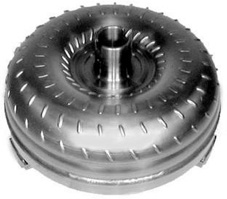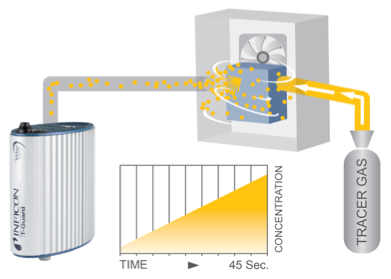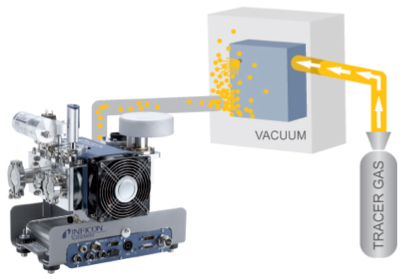Prove di tenuta dei convertitori di coppia
Description of Technical Challenge
Automatic transmission vehicles, especially passenger cars, are gaining popularity in the global market, especially in the premium and luxury vehicle segments. Automatic transmission vehicles are known for effortless driving, and the increase in congested stop-and-go driving conditions is pushing customers to select automatic transmission vehicles. Each automatic transmission needs a torque converter and manufacturers are trying to optimize torque converters to enhance vehicle operating efficiency.

Torque converters must be tested to be oil-tight to avoid wear of the internal parts and early failure.
At first, even the smallest leak in a torque converter will annoy the car’s driver (a stain on the floor after parking, for example), but over extended time, this leak will lead to malfunctioning of the car: During acceleration, the driver will feel slippage when the vehicle shifts from engine to drive. In this stage accelerated wear of the torque converter will also occur. Finally, if no oil is left in the torque converter, the torque converter will fail completely and driving power will no longer be transmitted.
The housing of the torque converter is made out of two shells which are welded together after assembling the internal parts. For quality control, this weld needs to be leak tested to prevent oil leakage. Typically, torque converters are tested against a leak rate in the 10-4... 10-5 mbarl/s range.
The INFICON Solution
Leak testing of torque converters
Two options exist for leak testing of torque converters, depending on required throughput and investment:
| Accumulation testing | Vacuum chamber testing | |
|---|---|---|
| Throughput | Low to medium | High |
| Investment | Low | High |
| Helium required | 100% | 20% to 40% |
For leak testing, the torque converter must be sealed on two sides: on a flat surface on the side facing the engine (later this surface will be sealed with an O-ring) and also on the side facing the transmission.

Torque converters can be tested with low investment in an accumulation system with the T-Guard sensor.
Accumulation testing
The part is placed in a simple chamber in an adapter of the leak testing system which seals all openings. Then the part is evacuated and the evacuation pressure is held for about 2 seconds to check for gross leaks. The torque converter is then pressurized with 100% helium to a slight overpressure pressure of approximately 1.5 bar (~ 22 psi) allowing the test gas to escape through any leaks into the accumulation chamber. Fans ensure an even distribution of the test gas in the chamber – so, independent of the position of the leak, precise measurement values are guaranteed. It is at this point that the T-Guard® Helium Accumulation Sensor determines the test gas concentration in this atmosphere. A rise of concentration is converted into a leak rate.

For high throughput testing and saving on helium cost, torque converters should be tested in vacuum chamber systems.
Vacuum chamber testing
For higher throughput and lower helium consumption, vacuum chamber testing is used. The torque converter is placed in the testing chamber and connected to the vacuum system. Once the chamber lid is closed, vacuum pumps pull a vacuum on the inner volume of the torque converter as well as on the vacuum chamber. When the torque converter is evacuated, it is backfilled with 20 to 40% of helium. Helium then has the opportunity to migrate outwards and if a leak is present, the INFICON LDS3000 Helium Leak Detector (connected to the vacuum chamber) detects the helium atoms as they emerge from the torque converter.
Both accumulation and vacuum chamber testing allow an operator to detect leaks confidently with high repeatability. Testing is not affected by heat and moisture on the test pieces or in the environment. In addition, parts can be tested quickly after welding.
Benefits of Leak Testing with Tracer Gas
- Accurate, traceable and repeatable measurements for confident leak testing
- Highly sensitive testing methods, able to detect small leaks (10-4...10-6 mbar l/s range)
- Testing independent of temperature and humidity
- Dry process, no risk of water intake during testing
- Option of automated, high throughput process, as well as a lower cost process available
For more information, please visit us at www.inficonautomotive.com